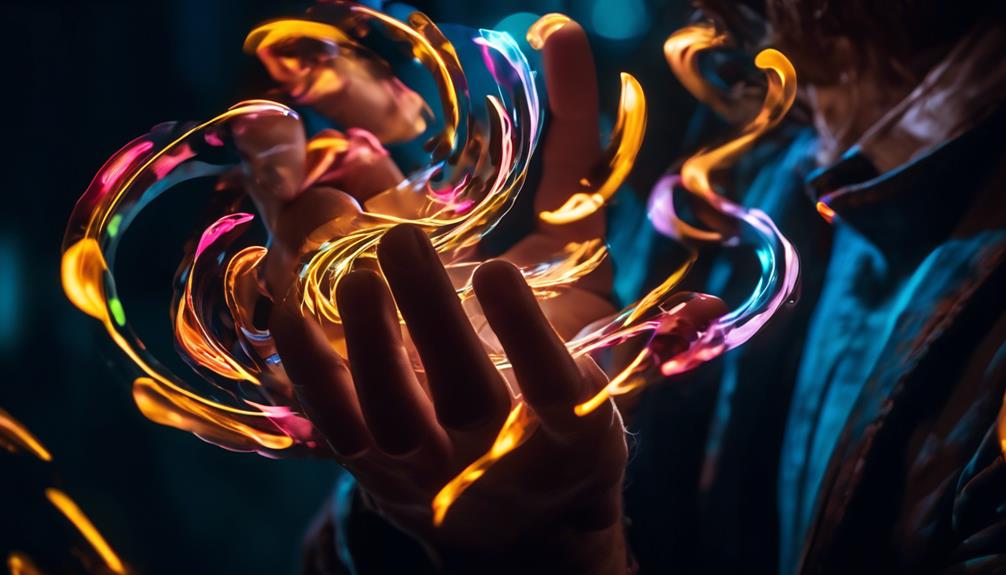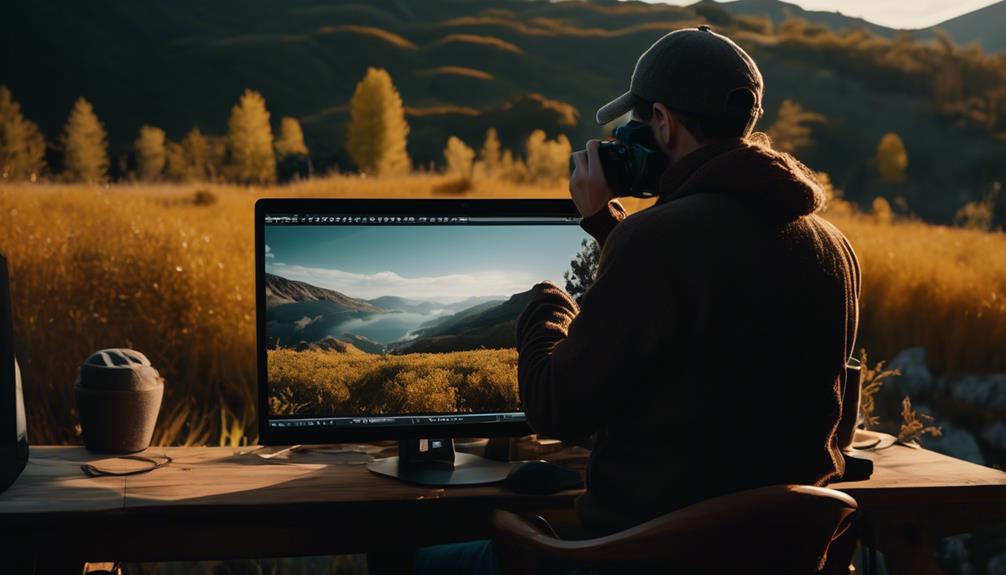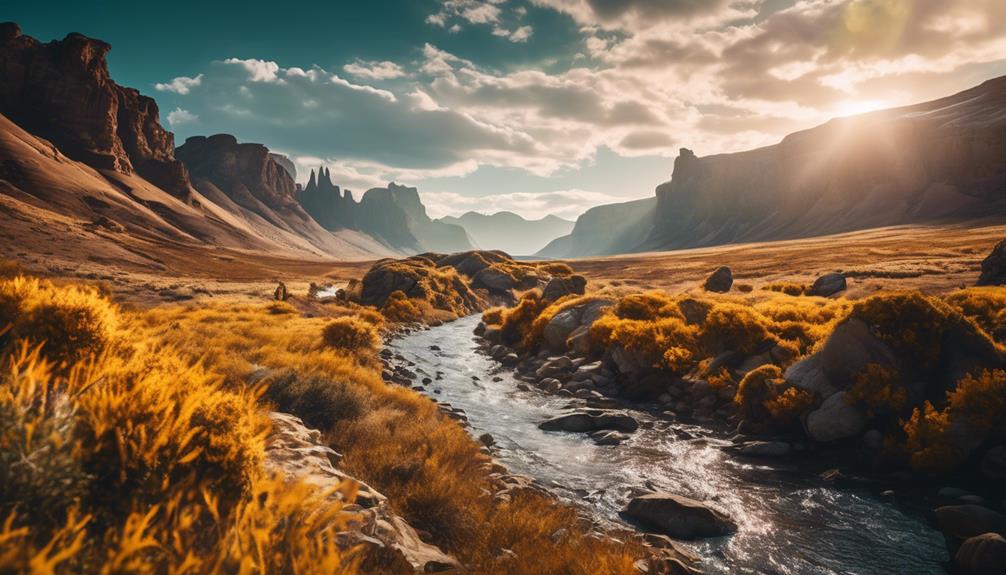Please note this post may contain affiliate links picked by me (Jay) that I have deemed may be of interest or relevant to you the reader of this.
These links do not affect the cost of the thing if you decide to purchase but i may get a little money if you choose to purchase.
For more information on my affiliate link policy click here.
Have you ever felt like your photographs could use a little extra something? A touch of magic, perhaps?
Well, fear not, because I have a few innovative post-processing techniques up my sleeve that will take your images to a whole new level.
Picture this – stunning black and white conversions that evoke a sense of timeless elegance, double exposure effects that blend two worlds into one captivating frame, and creative texture overlays that add depth and richness to your shots.
But that's not all! We'll also dive into the fascinating world of selective color manipulation and surreal composite imagery.
Intrigued? Well, hang tight, because I'm about to reveal some mind-blowing secrets that will transform your photography game forever.
Key Takeaways
- High contrast black and white conversions can enhance the aesthetic and create a dramatic effect in images.
- Double exposure effects allow for the merging of multiple images to create captivating compositions and tell abstract stories.
- Creative texture overlay adds depth and interest to photographs by incorporating textures and patterns.
- Selective color manipulation can create visually striking effects and guide the viewer's eye by highlighting specific colors in images.
Black and White Conversions
When it comes to black and white conversions, I find that using post-processing techniques can truly enhance the overall aesthetic of an image. One of the most effective techniques I've come across is creating high contrast black and white images. By increasing the contrast, you can make the dark areas even darker and the light areas even lighter, resulting in a striking and dramatic effect. This technique works particularly well for landscapes and architectural photography, where the strong contrast adds depth and dimension to the scene.
Another innovative approach is using infrared photography for black and white conversions. Infrared photography captures light that isn't visible to the human eye, creating a surreal and ethereal look. By converting these infrared images to black and white, you can emphasize the unique textures and patterns that are often hidden in the original color version. This technique works wonders for nature photography, as it brings out the intricate details of foliage and creates a dreamlike atmosphere.
Double Exposure Effects
I have discovered that incorporating double exposure effects into my post-processing techniques adds a captivating and artistic element to my photographs. It's a technique that allows me to merge two or more images into one, creating a unique and visually striking composition.
Here are three reasons why I love experimenting with double exposure effects:
- Unleashing creativity: Double exposure photography gives me the freedom to combine different elements and tell a story in a more abstract and imaginative way. By overlaying images, I can create unexpected juxtapositions and explore new visual narratives.
- Embracing the film noir aesthetic: The film noir genre is often associated with moody lighting, dark shadows, and mysterious atmospheres. By using double exposure effects, I can evoke the same sense of intrigue and drama in my photographs. It's a fantastic way to add a touch of nostalgia and create a timeless look.
- Adding depth and texture: Double exposure effects can give my photos a sense of depth and texture that's hard to achieve with a single image. By overlapping different textures, patterns, or landscapes, I can create a multi-layered composition that draws the viewer in and invites them to explore every detail.
Creative Texture Overlay
One exciting technique to enhance the visual impact of my photographs is by incorporating creative texture overlay. By adding different textures and patterns to my images, I can create a unique and captivating look that sets them apart from the rest. This technique allows me to experiment with abstract pattern creation and vintage film grain emulation, giving my photos a nostalgic and artistic feel.
To create a creative texture overlay, I first select a texture or pattern that suits the mood and style I want to convey. It could be anything from cracked paint to a grungy wall or even a delicate lace pattern.
Next, I overlay this texture onto my photograph using a photo editing software like Photoshop or Lightroom. I adjust the opacity and blending modes to ensure that the texture seamlessly integrates with the image, creating a harmonious blend of colors, shapes, and textures.
The result is a visually striking photograph with added depth and interest. The abstract patterns create a sense of intrigue, drawing the viewer's attention and inviting them to explore the image further. The vintage film grain emulation adds a timeless quality, evoking a sense of nostalgia and giving the photo a unique character.
Selective Color Manipulation
Selective color manipulation is a powerful technique that allows photographers to highlight specific colors in their images, creating a visually striking effect. With color grading and color correction, you can transform your photographs into stunning works of art.
Here are three reasons why you should give selective color manipulation a try:
- Enhance the subject: By isolating the color of your subject and desaturating the rest of the image, you can draw attention to what matters most. Whether it's a vibrant red flower against a black and white background or a bright blue car in a grayscale cityscape, selective color manipulation can make your subject pop.
- Create mood and atmosphere: Colors evoke emotions, and by selectively enhancing or muting certain colors, you can create a specific mood or atmosphere in your image. For example, saturating warm tones like red and orange can make a sunset scene feel more intense and passionate, while desaturating cool tones like blue and green can give a winter landscape a chilly and serene feeling.
- Tell a story: Selective color manipulation can be used to guide the viewer's eye and tell a story within an image. By highlighting key colors or elements, you can lead the viewer's gaze and emphasize important details or symbols.
Surreal Composite Imagery
Now let's explore the fascinating world of surreal composite imagery, where reality and imagination blend together to create captivating and mind-bending visual experiences.
Surreal composite imagery is a technique that allows photographers and digital artists to create dreamlike photo manipulations and abstract visual compositions. It involves combining multiple images into a single piece, seamlessly merging elements from different sources to construct a completely new and imaginative scene.
With surreal composite imagery, the possibilities are endless. You can transport yourself to fantastical landscapes, create otherworldly creatures, or even transform ordinary objects into extraordinary works of art. This technique encourages you to think outside the box and push the boundaries of your creativity.
To achieve these surreal effects, you'll need a solid understanding of photo editing software like Adobe Photoshop. By mastering techniques such as layer masking, blending modes, and adjustments, you can seamlessly integrate different elements into your composite, making them appear as if they were always meant to be together.
Frequently Asked Questions
How Long Does It Take to Master Black and White Conversions in Post-Processing?
Mastering black and white conversions in post-processing is a journey that takes time and practice. It's not something you can learn overnight, but with dedication and experimentation, you can develop your skills.
There are various techniques for adding creative texture overlay to your black and white images, such as using blending modes or applying texture overlays. These innovative post-processing techniques can elevate your photos and add depth and interest to your work.
Can Double Exposure Effects Be Achieved Without Using Multiple Exposures In-Camera?
I have always been intrigued by the idea of creating double exposure effects in my photos. It adds a touch of mystery and creativity that I find captivating.
Recently, I discovered that it's possible to achieve these effects without using multiple exposures in-camera. By using digital software and creative blending techniques in post-processing, the possibilities are endless.
It's a whole new world of experimentation and innovation waiting to be explored. So why not give it a try and see what unique and captivating images you can create?
Are There Any Specific Types of Images That Work Best for Creative Texture Overlay?
When it comes to creative texture overlay, there are certain types of images that work best. For example, landscapes with interesting patterns and textures can create a stunning effect when overlaid with another texture.
Additionally, close-up shots of objects with intricate details can also produce realistic texture overlays.
To achieve a more authentic look, it's important to experiment with different blend modes and opacity settings.
What Are Some Common Mistakes to Avoid When Manipulating Selective Colors in Post-Processing?
When it comes to manipulating selective colors in post-processing, there are a few common mistakes that I've learned to avoid.
One is going overboard with saturation, which can result in unnatural and garish-looking images.
Another mistake isn't paying attention to color harmony and balance, which can make the final result look off.
Lastly, it's important to not forget about the other elements of the image, such as composition and lighting, as they can greatly impact the overall aesthetic.
Is It Possible to Create Surreal Composite Imagery Using Only Free Post-Processing Software?
Is it possible to create stunning surreal images using only free post-processing software?
The answer is yes! I've been exploring the potential of free post-processing tools for artistic composite imagery, and let me tell you, the results are mind-blowing.
With the right techniques and a bit of creativity, you can transform ordinary photos into captivating works of art.
So why not try these innovative post-processing techniques and unlock a whole new world of visual possibilities?
You won't be disappointed.
Conclusion
In conclusion, these innovative post-processing techniques are like a paintbrush for your photographs, allowing you to transform them into stunning works of art.
From the timeless allure of black and white conversions to the dreamlike magic of double exposure effects, there's no limit to the creative possibilities.
With a touch of selective color manipulation and a sprinkle of creative texture overlay, your images will come alive with a surreal and captivating charm.
So why not unleash your inner artist and give these techniques a try? Your photos will thank you.


